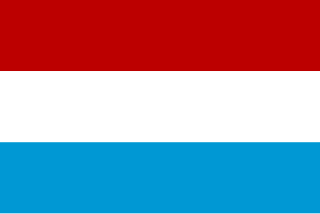Related Research Articles

New Amsterdam was a 17th-century Dutch settlement established at the southern tip of Manhattan Island that served as the seat of the colonial government in New Netherland. The initial trading factory gave rise to the settlement around Fort Amsterdam. The fort was situated on the strategic southern tip of the island of Manhattan and was meant to defend the fur trade operations of the Dutch West India Company in the North River. In 1624, it became a provincial extension of the Dutch Republic and was designated as the capital of the province in 1625.

New Netherland was a 17th-century colony of the Dutch Republic that was located on what is now the East Coast of the United States. The claimed territories extended from the Delmarva Peninsula to southwestern Cape Cod, while the more limited settled areas are now part of New York, New Jersey, Delaware, and Connecticut, with small outposts in Pennsylvania and Rhode Island.

Robert Livingston the Elder was a merchant, fur trader and government official in colonial New York. He was granted a patent to 160,000 acres of land along the Hudson River, becoming the first lord of Livingston Manor.

The Hudson Valley comprises the valley of the Hudson River and its adjacent communities in the Upstate region of the U.S. state of New York. The region stretches from the Capital District including Albany and Troy south to Yonkers in Westchester County, bordering New York City.

A cruller is a deep-fried pastry like a doughnut popular in the US and Canada often made from a rectangle of dough with a cut made in the middle that allows it to be pulled over and through itself, producing twists in the sides of the pastry. The cruller has been described as resembling "a small, braided torpedo". Some other cruller styles are made of a denser dough somewhat like that of a cake doughnut formed in a small loaf or stick shape, but not always twisted. Crullers may be topped with powdered sugar or icing.

Kiliaen van Rensselaer was a Dutch diamond and pearl merchant from Amsterdam who was one of the founders and directors of the Dutch West India Company, being instrumental in the establishment of New Netherland.

Halve Maen was a Dutch East India Company vlieboot that sailed into what is now New York Harbor in September 1609. She was commissioned by the VOC Chamber of Amsterdam in the Dutch Republic to covertly find a western passage to China. The ship was captained by Henry Hudson, an Englishman in the service of the Dutch Republic.

Fort Orange was the first permanent Dutch settlement in New Netherland; the present-day city of Albany, New York developed at this site. It was built in 1624 as a replacement for Fort Nassau, which had been built on nearby Castle Island and served as a trading post until 1617 or 1618, when it was abandoned due to frequent flooding. Both forts were named in honor of the Dutch House of Orange-Nassau. Due to a dispute between the Director-General of New Netherland and the patroonship of Rensselaerswyck regarding jurisdiction over the fort and the surrounding community, the fort and community became an independent municipality, paving the way for the future city of Albany. After the English reconquered the region they soon abandoned Fort Orange in favor of a new fort: Fort Frederick, constructed in 1676.
Beverwijck, often written using the pre-reform orthography Beverwyck, was a fur-trading community north of Fort Orange on the Hudson River in New Netherland that was renamed and developed as Albany, New York, after the English took control of the colony in 1664.

The Manor of Rensselaerswyck, Manor Rensselaerswyck, Van Rensselaer Manor, or just simply Rensselaerswyck, was the name of a colonial estate—specifically, a Dutch patroonship and later an English manor—owned by the van Rensselaer family that was located in the area that would later become the Capital District of New York in the United States.
Bastiaen Jansz Krol was Director of New Netherland from 1632 to 1633.

Fort Nassau was the first Dutch settlement in North America, located beside the "North River" within present-day Albany, New York, in the United States. The factorij was a small fortification which served as a trading post and warehouse.

David Pieterszoon de Vries was a Dutch navigator from Hoorn.

The Map of Rensselaerswyck is a map created during the 1630s, probably 1632, at the request of the owner of the Manor of Rensselaerswyck, Kiliaen van Rensselaer, Dutch jeweler and patroon. Rensselaerswyck was the only successful patroonship within the colony of New Netherland, settled by the Dutch West India Company at the behest of the States-General of the United Netherlands. The map is believed to be the first ever commissioned or created of Rensselaerswyck.
Hendrick van Rensselaer was director of the Eastern patent of the Rensselaerswyck manor. The estate was composed of land in Columbia County, New York, and land opposite Albany, New York, on the Hudson River, named Greenbush.

The coat of arms of Albany, New York, is the heraldic symbol representing the city of Albany, the capital of the U.S. state of New York. The coat of arms is rarely seen by itself; it is almost always used in the city seal or on the city flag. The current coat of arms was adopted in 1789, although prior to that it was significantly simpler, ranging from stylized lettering to a caricature of a beaver. Included in the coat of arms are references to Albany's agricultural and fur-trading past. It is supported by a white man and an American Indian and is crested by a sloop. The coat of arms is meant to represent the "symbols of industry and its rewards to man and beast on land and sea".

The history of Albany, New York prior to 1664 begins with the native inhabitants of the area and ends in 1664, with the English takeover of New Netherland. The area was originally inhabited by Algonquian Indian tribes and was given different names by the various peoples. The Mohican called it Pempotowwuthut-Muhhcanneuw, meaning "the fireplace of the Mohican nation", while the Iroquois called it Sche-negh-ta-da, or "through the pine woods". Albany's first European structure was a primitive fort on Castle Island built by French traders in 1540. It was destroyed by flooding soon after construction.
Adriaen Jorissen Thienpoint or Tienpoint was a Dutch sea captain-explorer who commanded several ships to the newly developing colonies of New Netherland and New Sweden as well as other holdings of the Dutch Empire in North America in the early 17th century.
Johannes Megapolensis (1603–1670) was a dominie (pastor) of the Dutch Reformed Church in the Dutch colony of New Netherland, beginning in 1642. Serving for several years at Fort Orange on the upper Hudson River, he is credited with being the first Protestant missionary to the Indians in North America. He later served as a minister in Manhattan, staying through the takeover by the English in 1664.
Ryer Jacobse Schermerhorn was a merchant, politician and judge in provincial New York. He was the progenitor of the Schenectady branch of the Schermerhorn family.
References
- ↑ Munsell, Joel (1854). The annals of Albany, volume 5. p. 98.
Fort Orange was erected in 1617, and a person by the name of Sebastian Croll was the first commissary at the fort.
- 1 2 Bradbury, Mrs. Anna R. (1909). "The Dutch Occupation". History of the city of Hudson, New York : with biographical sketches of Henry Hudson and Robert Fulton. Hudson, N.Y.: Record Print. and Pub. Co. p. 7.
... Sebastian Croll (pronounced Crull) was placed in command. He is the traditional inventor of the cruller ...
- ↑ Ripley, Robert (1971). Ripley's Believe It or Not! 16th Series. Pocket Books. ISBN 9780671800727.
- ↑ "The Gossips of Rivertown: MRS. Anna Bradbury". 13 March 2011.